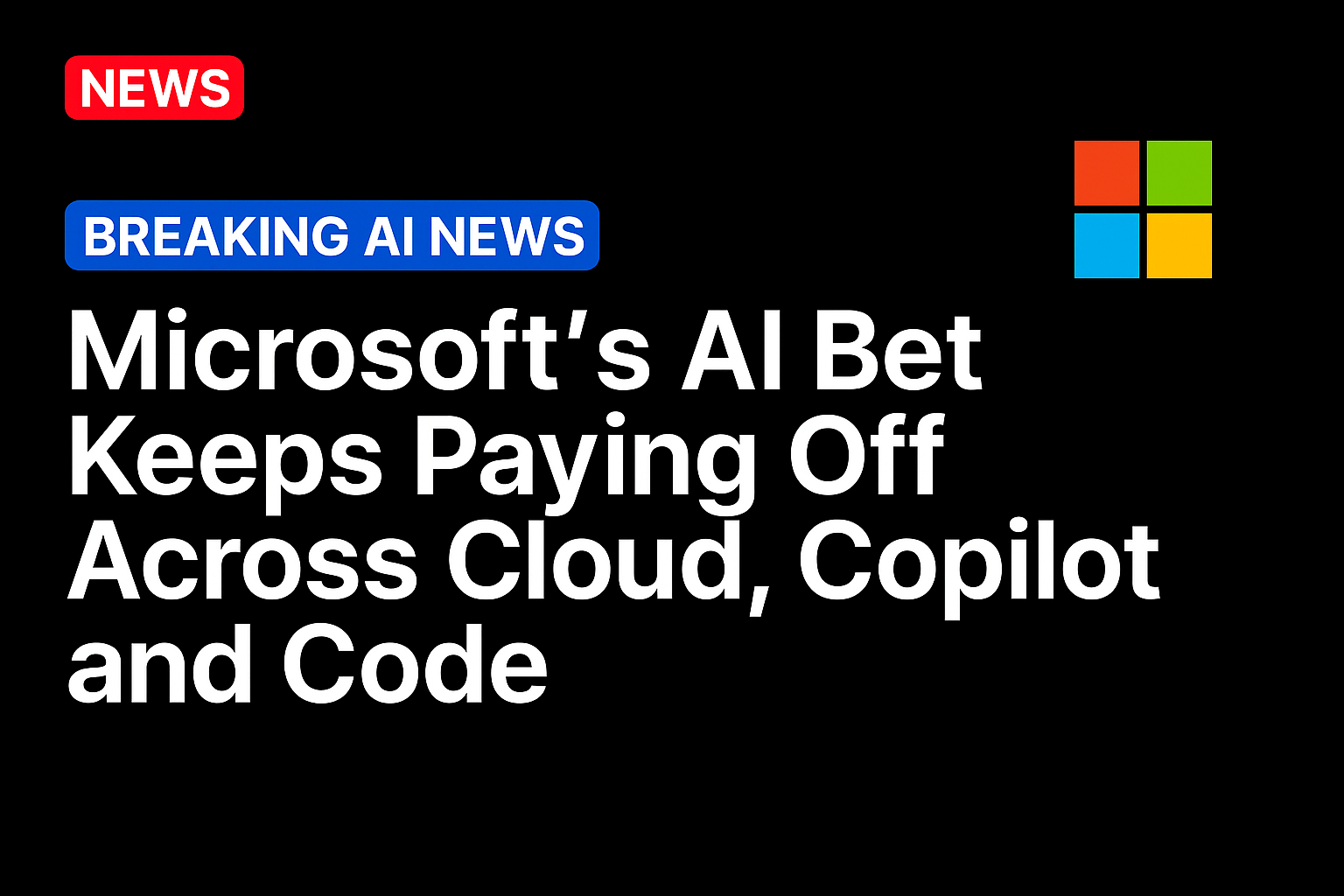Microsoft is no longer just a software company or even a cloud company. It’s now an AI infrastructure provider shaping how work, creativity and productivity will function in the next decade.
For proof, look no further than the tech giant’s successfully restructured relationship with OpenAI, one that on Tuesday (Oct. 28) gave Microsoft a 27% stake and pushed its valuation north of $4 trillion.
On Wednesday (Oct. 29), Microsoft reported for its first quarter 2026 earnings nearly $78 billion in quarterly revenue, fueled by 40% cloud growth and an expanding AI moat built atop a foundation of trust and technical scale. The company also took a $3.1 billion hit from its investment in OpenAI.
“Our planet-scale cloud and AI factory, together with Copilots across high value domains, is driving broad diffusion and real-world impact,” said Satya Nadella, chairman and chief executive officer of Microsoft. “It’s why we continue to increase our investments in AI across both capital and talent to meet the massive opportunity ahead.”
Of course, even that “planet-scale” cloud can still wobble and impact its denizens. Also on Wednesday, before Microsoft reported its earnings, an Azure outage struck, leaving cloud customers unable to access Microsoft services, including airlines like Alaska and Hawaiian.
But aside from that blip, which as of reporting was still ongoing, across every financial metric Microsoft outperformed analyst expectations and even its own guidance for the quarter.
Advertisement: Scroll to Continue
“We delivered a strong start to the fiscal year, exceeding expectations across revenue, operating income, and earnings per share,” said Amy Hood, Microsoft EVP and CFO. “Continued strength in the Microsoft Cloud reflects the growing customer demand for our differentiated platform.”
The company’s stock was trading down around 4% after hours.
Cloud First, AI Always
The Microsoft Cloud segment, encompassing Azure, Microsoft 365, Dynamics and other enterprise services, generated $49.1 billion in revenue, a 26% increase from the prior year. This figure represents nearly two-thirds of Microsoft’s total business.
More striking is the 51% growth in commercial remaining performance obligations (future contracted revenue), which now totals $392 billion. That backlog is likely to point to durable demand from corporate clients eager to embed AI into their daily workflows.
In Azure, growth continues to accelerate despite macroeconomic headwinds that have slowed IT spending elsewhere. Revenue from “Azure and other cloud services” rose 40%, underscoring the platform’s dominance in enterprise AI adoption. Azure’s rapid scaling has been fueled by partnerships with OpenAI, Nvidia and Fortune 500 firms building custom generative AI models.
Microsoft’s ability to turn foundational AI models into recurring enterprise revenue through its Copilot suite — spanning Office, Dynamics, GitHub and Windows — is potentially setting the pace for an industrywide transformation.
Microsoft’s dominance in cloud and AI comes amid intensifying competition from Amazon, Google, and a fast-emerging ecosystem of open-source AI players. But by embedding Copilot features into virtually every product category, Microsoft is effectively monetizing AI at scale. Each new feature, whether it’s Copilot in Excel, Windows or GitHub, feeds demand for Azure compute and reinforces the platform’s network effects. The result is a virtuous cycle where usage drives infrastructure revenue, which in turn funds further AI innovation.
Unlike the cloud adoption curve of the 2010s, which required convincing enterprises to move workloads, AI adoption is being pulled by demand. Businesses are now asking how fast they can deploy these tools, not whether they should.
A Refreshed Corporate Identity
If there was one division where Microsoft’s growth narrative was more tempered, it was the More Personal Computing segment: Windows, Surface devices and gaming. The segment posted $13.8 billion in revenue, a modest 4% increase. The highlights were incremental: Windows OEM and Devices revenue rose 6%, suggesting that PC demand is stabilizing after two years of contraction, whereas gaming — Xbox Content & Services — was essentially flat, rising just 1% (or unchanged in constant currency).
With the Activision Blizzard acquisition now fully integrated, Wall Street observers had potentially expected stronger synergies between Microsoft’s Game Pass ecosystem and new releases. That payoff has yet to materialize, though Microsoft’s broader entertainment strategy remains tethered to long-term ambitions: converging gaming and AI through personalized experiences and generative world-building tools.
Overall, Microsoft reported that it expects total spending to increase sequentially, and that the growth rate of spend in fiscal 2026 will outpace fiscal 2025. Specifically, management noted that higher capital expenditures will focus on GPUs, CPUs and data centers, an indication that the company is doubling down on infrastructure now that enterprise customers are demanding ever-larger AI compute contracts.
Source: https://www.pymnts.com/




